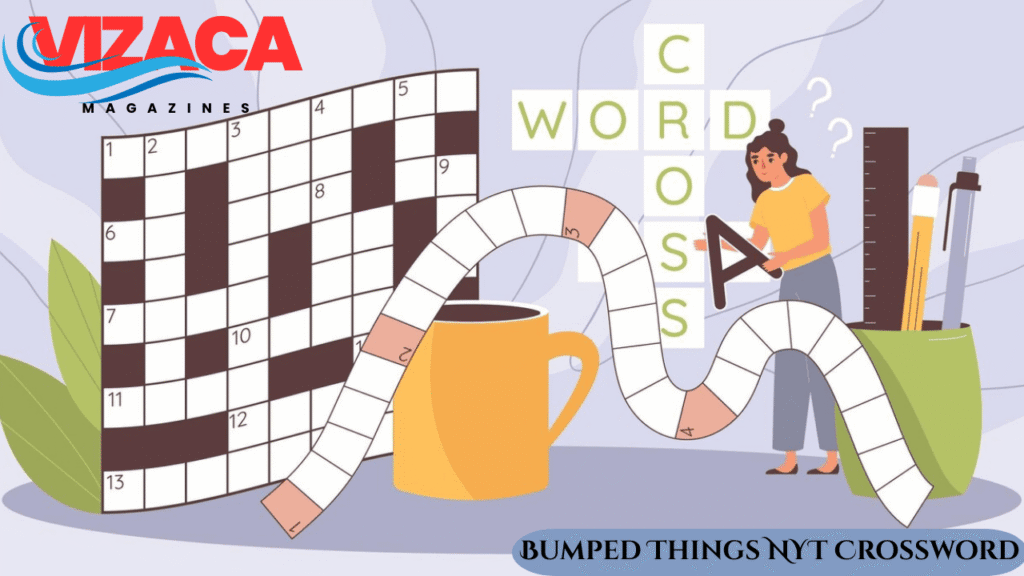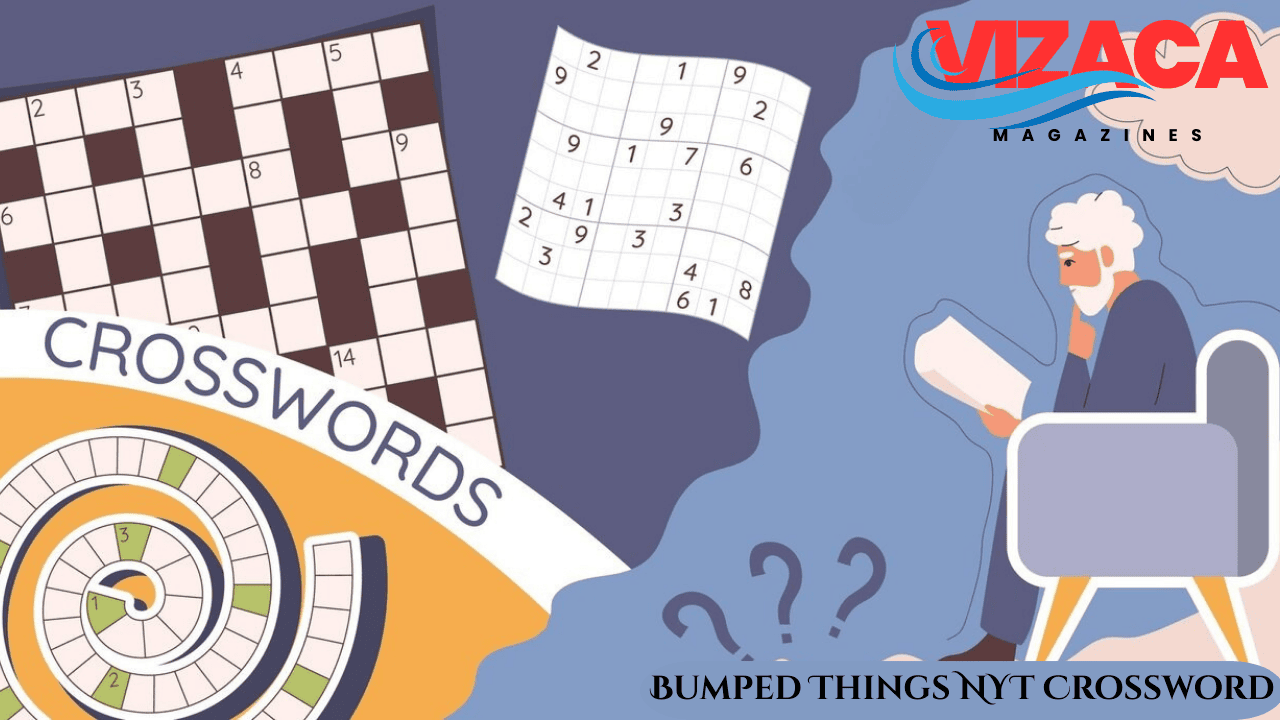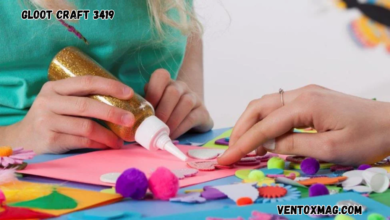Bumped Things NYT Crossword: A Deep Dive into the Puzzle World
Introduction to Bumped Things NYT Crossword
The New York Times Crossword, a beloved tradition for puzzle solvers across the globe, continues to evolve with inventive clues and intriguing challenges. Among the myriad of thematic clues and trickily worded prompts, the phrase “bumped things NYT crossword“ has garnered attention from avid solvers. It represents the kind of playful, unexpected clue that forces solvers to think outside the box, often leading them to rethink common knowledge in favor of clever wordplay.
Understanding how “bumped things” fit into the broader context of the NYT crossword culture is essential for both newcomers and seasoned players. In this article, we dive into the world of bumped things NYT crossword, breaking down its significance, solving approaches, common interpretations, and how mastering such clues can elevate your puzzle game.
The Nature of “Bumped Things” Clues in NYT Crossword
In the world of crosswords, clues are crafted with the intention of both aiding and misleading the solver. The phrase “bumped things NYT crossword” typically refers to objects or entities that can collide, knock, or nudge into others. However, the NYT crossword is known for its nuanced layering of meanings—making “bumped” apply metaphorically as well as literally.
Some typical interpretations of “bumped things” in the crossword might include:
- Physical collisions: Cars, balls, or even shopping carts.
- Sudden encounters: Meetings, dates, or chance events.
- Adjustments or changes: Schedules, timelines, or plans being “bumped” forward or backward.
Understanding the possible breadth of the clue’s meaning allows solvers to flexibly consider a range of answers, from the literal to the abstract. This multi-layered approach is crucial when tackling the bumped things NYT crossword puzzles.
Historical Evolution of Bumped Things Clues
Over the decades, the New York Times Crossword has refined its clue crafting techniques. “Bumped things” is a relatively modern style of cluing that reflects the evolution from strictly literal definitions toward more playful, pun-driven, and metaphorical hints.
In the 1990s and early 2000s, crossword editors began embracing broader wordplay, encouraging solvers to think laterally rather than linearly. This shift has led to clues like bumped things NYT crossword being commonplace, where a single clue might simultaneously suggest:
- A physical nudge.
- A calendar change.
- A metaphorical impact on a situation or relationship.
Recognizing this evolution helps solvers appreciate the deeper artistry involved in puzzle construction and highlights the layered beauty of the NYT Crossword experience.
Common Answers Associated with Bumped Things NYT Crossword
When encountering a clue like bumped things NYT crossword, a variety of answers might be correct, depending on the specific puzzle. Some examples of frequent solutions tied to “bumped things” include:
- CARS – Vehicles bumping into each other.
- ELBOWS – In crowded spaces, people often bump elbows.
- CARTS – Supermarket carts are notorious for collisions.
- DATES – A meeting or event that is bumped to another day.
- BILLIARD BALLS – In pool, balls frequently bump into one another.
- HIPS – Dancing partners might bump hips during certain moves.
Keeping a mental list of such frequent bumping objects or events can drastically cut down solving time when encountering the bumped things NYT crossword clue in future puzzles.
Strategies for Solving Bumped Things NYT Crossword Clues
Tackling a puzzle that features a bumped things NYT crossword clue demands specific strategies. Here are some targeted approaches:

1. Interpret the Clue Both Literally and Figuratively
Always ask yourself: Is the crossword clue referencing an actual physical bump, or a metaphorical one? Having both possibilities in mind opens up a broader range of potential answers.
2. Count the Letters
NYT puzzles almost always provide the number of letters in the answer. Use that information to filter possibilities. For example, if the answer is four letters, “CARS” might fit perfectly.
3. Consider Crossword Tropes
Crossword constructors love using specific types of “bumped things” repeatedly. Balls, body parts, events, and meetings are common tropes. Knowing these patterns will give you a critical advantage.
4. Check Cross-Checking Clues
The beauty of crossword puzzles lies in the cross-referencing of answers. If you’re unsure about a bumped things NYT crossword answer, check the crossing answers for hints or confirmations.
5. Think About Action Verbs
Words like “bump,” “hit,” “knock,” “nudge,” and “shift” often point toward answers involving movement or impact. Brainstorm nouns associated with these actions.
The Psychological Challenge of Bumped Things NYT Crossword
Part of the difficulty in solving bumped things NYT crossword clues lies in the psychological pressure they create. Solvers may find themselves second-guessing even the most obvious answers, questioning whether “cars” is too simple or “dates” too obscure.
This self-doubt is a crucial part of the NYT crossword-solving experience, where the true challenge isn’t just about knowing facts but navigating mental roadblocks. Recognizing that hesitation is natural can help solvers relax and tackle even the trickiest bumped things NYT crossword clues with confidence.
Famous Examples of Bumped Things NYT Crossword Clues
Throughout the history of the New York Times Crossword, several famous puzzles have included particularly memorable bumped things clues. Here are a few standout examples:
- “What bowling pins do” (Answer: FALL — indirectly hinting at bumping into each other).
- “Objects in a game of bumper cars” (Answer: CARS — a direct and playful clue).
- “Changes in calendar appointments” (Answer: DATES — a figurative use of “bumped”).
Each of these examples illustrates how flexible and creative constructors can be when incorporating bumped things NYT crossword clues into their grids.
Crafting Your Own Bumped Things Clues
If you’re feeling particularly ambitious, crafting your own crossword clues centered around “bumped things” can be an enlightening exercise. Here are some beginner tips:
- Use Action-Oriented Language: Bump, collide, shift, nudge, or knock can inspire a variety of clue themes.
- Layer the Meaning: Allow your clues to have double meanings, encouraging solvers to consider both physical and figurative bumping.
- Keep It Playful: Crossword puzzles are meant to be fun, and playful language keeps solvers engaged and entertained.
Imagining and writing your own bumped things NYT crossword clues can deepen your understanding of how these puzzles are constructed and sharpen your solving skills in return.
Challenges Posed by Bumped Things NYT Crossword Clues
Despite the fun, bumped things NYT crossword clues present real challenges:
- Ambiguity: Clues can often lead to multiple plausible answers.
- Short Answers: These can be deceptively tricky since shorter words have more possible combinations.
- Evolving Language: As language trends change, so do the meanings of common words related to bumping.
To stay ahead, solvers must remain flexible, creative, and willing to consider fresh interpretations beyond traditional answers.
Advanced Techniques for Mastering Bumped Things NYT Crossword
For seasoned solvers looking to dominate the bumped things NYT crossword clues, a few advanced strategies can provide the edge:
1. Master Crosswordese
Understanding the peculiar language of crossword puzzles (“ORE,” “ERA,” “ELI,” etc.) ensures you’re never caught off guard by obscure filler words connected to bumped scenarios.
2. Memorize Bumping-Related Vocabulary
Build a mental catalog of words associated with bumping, like “shove,” “jostle,” “graze,” and “crash,” and mentally map them to potential clue contexts.
3. Practice Lateral Thinking
NYT crosswords reward those who think creatively. Force yourself to brainstorm outside-the-box interpretations of clues like bumped things NYT crossword during practice sessions.
Final Thoughts on Bumped Things NYT Crossword
The bumped things NYT crossword clue encapsulates everything that makes the New York Times Crossword a cultural treasure: cleverness, wordplay, misdirection, and fun. Whether you’re a novice getting your first taste of NYT puzzles or a veteran chasing the elusive Saturday grid completion, encountering a bumped things clue challenges your linguistic agility and problem-solving skills.
By understanding the layered meanings, developing strategic solving habits, and embracing the playful spirit of the puzzles, solvers can turn even the most bewildering bumped things NYT crossword clues into moments of satisfying triumph.
FAQs About Bumped Things NYT Crossword
What does “bumped things NYT crossword” typically refer to?
“Bumped things” usually refers to objects or events that collide, are moved, or rescheduled. It can be literal (like cars) or metaphorical (like bumped appointments).
How should I approach solving a bumped things NYT crossword clue?
Think both literally and figuratively. Consider physical collisions, changes in plans, or body movements. Check crossing clues for additional hints.
Are bumped things clues considered easy or hard in NYT crosswords?
They vary. Early-week puzzles (Monday-Wednesday) might use more straightforward “bumped things” clues, while later-week puzzles (Thursday-Saturday) often use more abstract or playful versions.
Why is understanding “bumped things” important for crossword solvers?
Recognizing the broad range of meanings helps solvers avoid getting stuck and increases solving efficiency.
How often do bumped things clues appear in NYT crosswords?
While not daily, “bumped things” is a popular theme in NYT crosswords and appears several times a year, particularly in puzzles with playful or thematic designs.





